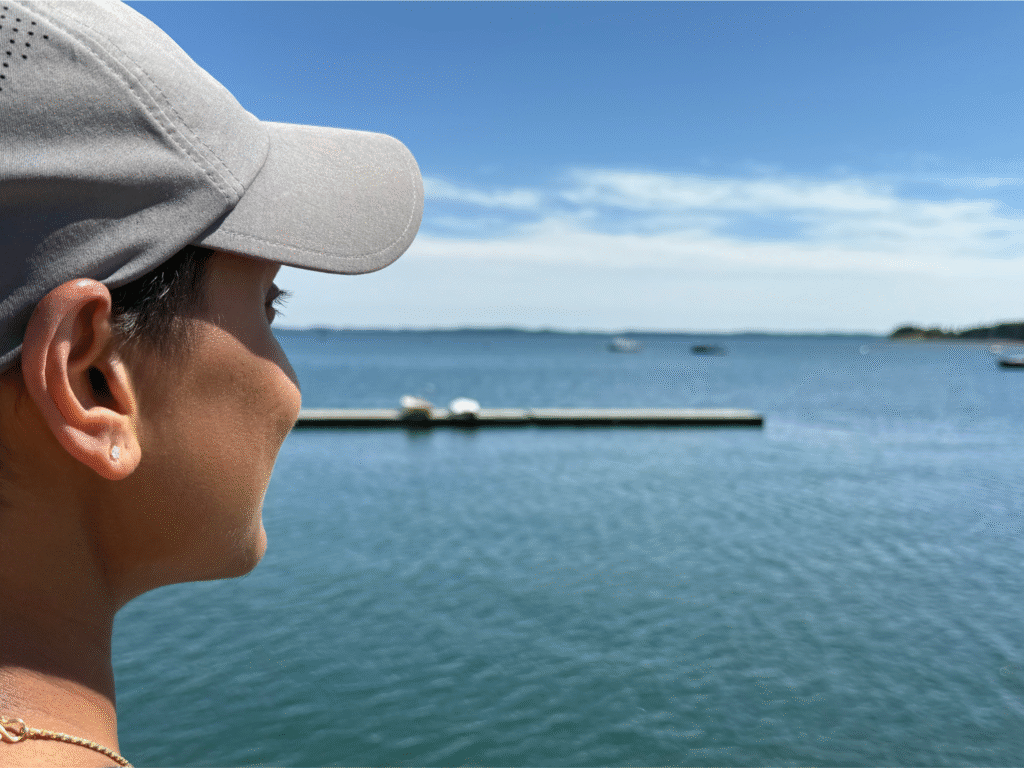Today, I’m sharing the third post in my Mindset Reset series. After a challenging year, I recently stepped away with my family for some much-needed rest and perspective. That pause gave me space to breathe, reflect, and begin shaping what comes next.
In this post, I draw on a deeply personal experience—one that tested me in every way—and share how I learned to rise forward after a major setback. Along the way, I developed a simple framework that helped me find strength in disruption and uncertainty, and I believe it can help you, too.
——————————————-
What if the worst thing that ever happened to you could secretly be an invitation to evolve?
The trickiest part of the growth journey is to recognize an opportunity for development while you’re still in the thick of it. When something disruptive or painful happens—something that flips your world upside down—our ancient hindbrain kicks in. We seek protection. We want safety. We just want things to go back to how they were. We may retreat into a victim mentality and think, ‘why me?’, or we may just not believe that we have the energy, bandwidth, or ability to deal with the issue.
That’s normal. I’ve been there.
When my mind starts chasing control or craving normalcy, I’ve learned to pay attention. It means I’m on a problem-solving path. But the real shift—the one I’ve been consciously practicing—is not to stop at recovery. It’s to ask: how can this become fuel for growth?
In November 2024, I was diagnosed with breast cancer. I recently completed my main treatments, and things have been progressing well. But from the very beginning, I made a decision: this wouldn’t just be a recovery story. It would be a growth mission. An invitation to build a more antifragile life.
When Life Shifts Without Warning
I got the call just days before a long-awaited family trip to India—my husband and son’s first time, and my parents’ chance to see it through their grandson’s eyes. What should have been a joyful adventure suddenly felt heavier, charged with uncertainty and fear.
But here’s the thing: I realized I had a choice. I couldn’t change the diagnosis, but I could change how I met it. That decision—to stay grounded, curious, and spiritually open—became my foundation. Instead of seeing India as a trip overshadowed by bad news, I chose to see it as a gift: a chance to reset, to soak in perspective, and to gather strength before the road ahead.
It All Starts With Pattern-Watching
Once I made that decision, something shifted. I noticed myself becoming more aware of my thoughts and how they were shaping my emotions and actions. This wasn’t about positive thinking—it was about being the witness.
By paying attention, I slowed down my racing mind, named my emotions, and gave myself room to breathe. That pause created space to respond instead of react. It let me gather the right information, care for my wellbeing, and lean deeply into my support system. These became my anchors—my first small acts of battling against uncertainty.
Looking back, I believe this self-awareness experience made my treatments—chemo, surgery, radiation—more bearable than they otherwise might have been. It didn’t erase the hard, but it gave me tools to face it.
The Rise Forward Method™: A Framework for Growth in Uncertain Times
Growth doesn’t happen in the smooth seasons—it happens when life pushes us into unfamiliar territory. The Rise Forward Method™ is a six-part framework rooted in the antifragile principles I laid out in this post. I built it during treatment, but it applies to many of life’s challenges: career pivots, relationship changes, or health scares. It’s about rising forward, not just bouncing back.
Here’s how it works:
🔍Assess – Take stock of where you are and what lies ahead—know your ground before you begin the climb
In my life: As I learned more about the treatments I’d have to undergo, I also learned about the impact they could have on me, physically and mentally. In response, I researched my needs and explored supports to meet those needs – for me, these were health and wellness, social, financial, and spiritual.
🌀 Adapt – Adjust your stance to meet the immediate challenge, finding ways to bend without breaking
In my life: During chemo, the prospect of fatigue scared me most. I had always been active, so instead of stopping movement, I adapted it. Yoga for strength and mobility, daily walks with a weighted vest for endurance—these adjustments kept me moving without burning out.
⬆️ Upgrade – Strengthen your systems, habits, and mindset so you’re not just coping, but operating at a higher level
In my life: Nutrition became non-negotiable during my treatment period. I discovered that what I ate, when I ate, and how much I ate directly affected my energy and quality of life. I upgraded my habits: more whole foods, no screens while eating, and slowing down to chew mindfully. Small upgrades, big payoffs.
➕ Add – Introduce new supports, practices, and connections that fuel your healing and growth
In my life: Treatment motivated me to go beyond small tweaks. I built a new sleep routine—longer wind-downs, tech-free evenings, and breathwork. Now, sleep feels like a superpower, not an afterthought. It’s a habit I’ll carry for life.
➖ Subtract – Let go of what no longer serves you, lightening your load for the journey ahead
In my life: I took a hard look at what was draining me. One big one? Screen time. Cutting down TV opened up space for journaling, connection, and creativity. Subtraction gave me back energy I didn’t realize I was losing.
🙏 Rest – Pause to recover, integrate, and allow growth to take root before stepping forward again
In my life: The quiet moments with my dog Tilley—slow walks, mid-day naps, simply sitting together—became my best teachers of rest. These pauses weren’t empty; they were where my mind, body, and spirit integrated the progress I’d made. Rest gave me perspective, helped me celebrate small wins, and reminded me to practice compassion with myself.
——————————–
Researchers have long studied how people grow through hardship. Psychologists call it post-traumatic growth—the idea that disruption can deepen our appreciation of life, strengthen relationships, and expand our sense of possibility.
Performance science describes something similar: stress + rest = growth, where challenges paired with recovery make us stronger than before. The Rise Forward Method builds on these insights and makes them practical and personal. Instead of staying abstract, it offers six concrete steps—Assess, Adapt, Upgrade, Add, Subtract, and Rest—that anyone can use to turn adversity into fuel for growth in real time.
Final Thoughts
Rising forward has shown me that true growth comes not from resisting disruption, but from being reshaped by it. Cancer didn’t just test me—it strengthened me. It taught me to rise not in spite of the challenge, but because of it. Today, I care for my body, mind, and spirit differently, and I place far greater value on joy, connection, and purpose. That’s the gift hidden inside the hardship.
And here’s the truth: you shouldn’t have to wait for a life-altering event to start. You can begin right now. Ask yourself: What habit can I adapt to better fit my life today? What’s one area I could upgrade to feel stronger? What nourishing routine could I add that future-me would thank me for? And what’s one drain I could subtract to create more space for what matters? And what is that act of self-love I can perform to help rest, recover, and restore balance?
If you’re standing at your own rupture point, know this—you are not broken. You are being invited to evolve. Your rise forward can become your blueprint for a more intentional, antifragile life. And maybe, just maybe, the hardest thing you’ve faced could turn into the strongest part of your story.



